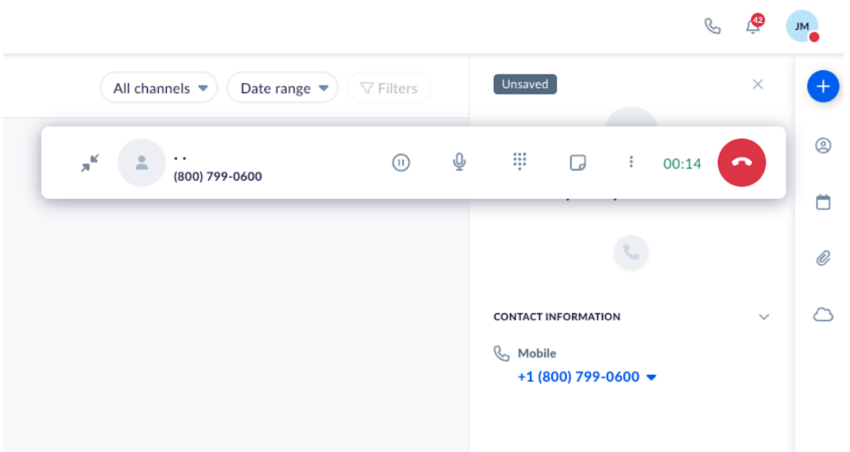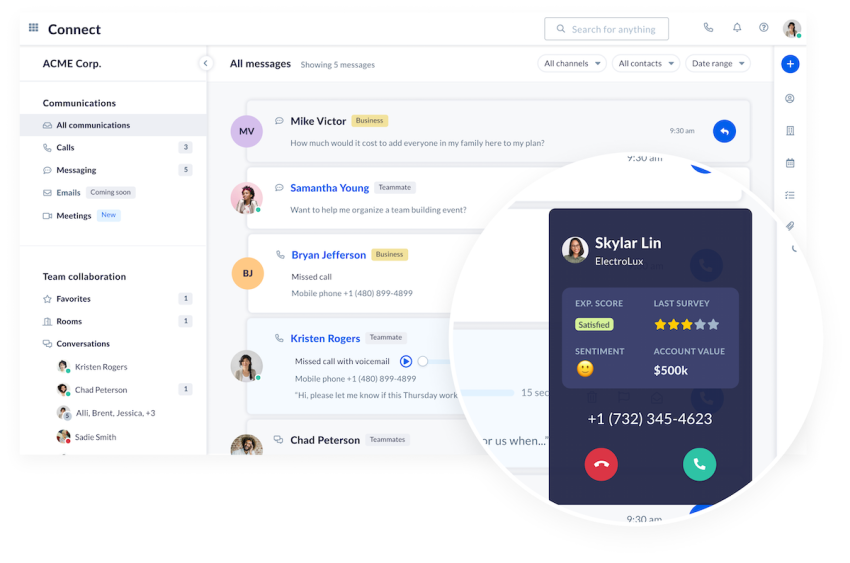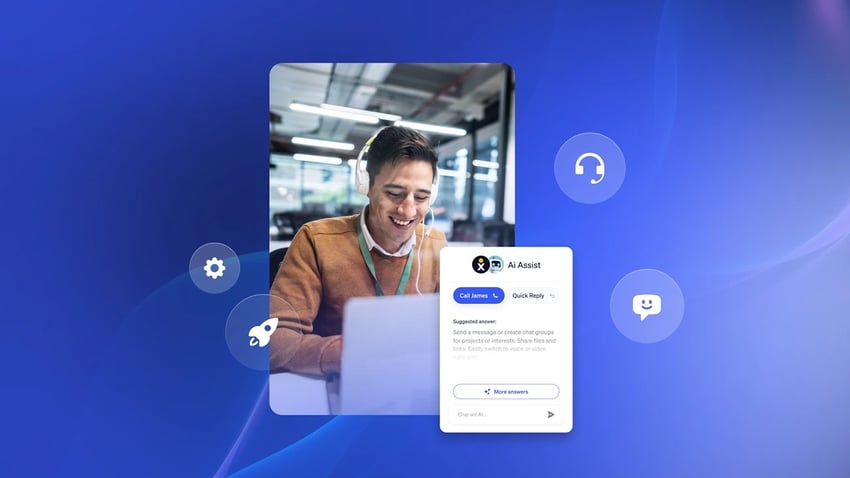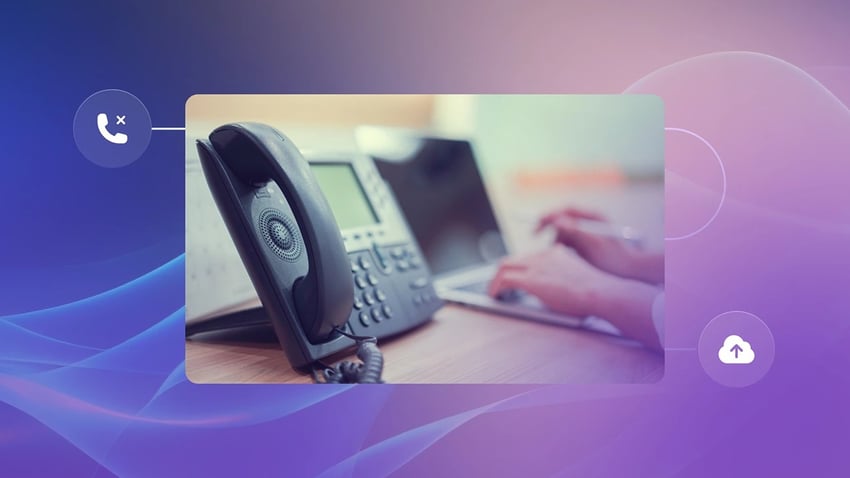The more information you have on a customer, the more personalized the experience you can provide them. That’s exactly what automatic number identification (ANI) provides.
In most contact centers, a lot of time is wasted gathering data and information. Wouldn’t it be better for your agents and customers if you had a way to source data automatically to speed up the process?
ANI helps automate the process of customer discovery, improving up first call resolution and providing a more personalized experience for your customers.
What Is ANI?
ANI is a system used by phone carriers to identify the telephone number of anyone making a call. It’s also being adopted by call centers to provide agents with more information about each caller.
ANI originated as a tool used for billing purposes. Using ANI, phone companies could match a caller with their account and provide accurate billing. For example, when Joe from Pets R Us makes a call from number 602-555-1234, it matches the Pets R Us account, which is then billed without manual intervention.
How does ANI work?
When anyone makes a call, the telephone exchange can identify the caller’s number in real time. Without this information, the exchange could not successfully connect the call because it takes two parties to establish a phone call over a telecommunications network.
When the exchange receives the caller’s number, it sends this information when connecting the call. The following information is included:
- Dialing code
- Phone number (including mobile and toll-free numbers)
- Location (based on the area code)
The exchange receives this information from the calling party and passes it on to the recipient of the incoming call. Simple, right?
In the background, a signaling system known as Signaling System No. 7 does the hard work. It uses the signals within a phone call to send the data from point A to point B (caller to recipient).
Once the information is in transit, the data is sent through a separate channel and is available even if the caller ID information is blocked.
Sounds like normal caller ID, right? We hear you. Here’s how ANI is different.
How ANI differs from caller ID
ANI has three main characteristics that set it apart from standard caller ID:
- Security: It’s extremely hard for spam callers to falsify or block their caller ID when ANI is in place, so you know exactly who’s calling you every time.
- Billing: You can match phone number information with customer accounts to automatically bill usage. This must be done manually when using caller ID.
- Routing: Matching phone number information allows for automatic call routing (to specialist or local departments) instead of relying on your phone system configuration using caller ID only.
4 Benefits of ANI for Your Call Center
1. Rapid identification
When a customer or prospect calls, call center agents immediately receive their information, allowing for manual or automatic account lookup without asking the caller for information. All in all, this is a more efficient, less customer-reliant process for identity verification.

One classic example is a banking call center. When validating a customer account, you can use ANI as part of the process. The interactive voice response (IVR) system checks the incoming number against the customer’s details on file. If it matches, verification is complete, and there’s one less step for your customer.
2. Personalized service
If you’ve ever used computer telephony integration (CTI), you’ll be used to features such as screen pop and customer accounts appearing automatically in your customer database or CRM.

ANI ensures this happens every time by providing the phone number information needed to access your customer interaction history. When this is loaded without the customer providing input, you decrease the average handle time and can access everything you need to know about the customer. There’s no need to ask them to recap their last call, as everything is right in front of you.
Pro tip: Train call center agents to avoid revealing sensitive information about callers to mitigate social engineering attempts. For example, don’t say, “This is John Smith, right?” when answering an inbound call.
3. Routing inbound calls
If you have an automatic call distributor (ACD) or pre-configured call routing based on specific phone numbers, locations, or priority customers, ANI ensures the information you need is carried through to your phone system.
When callers hide their caller ID accidentally or by design, they won’t get routed correctly and must start their call at a receptionist or IVR system. This halts their progress and becomes a source of frustration, as they must explain their reason for calling to be transferred manually. The alternative, using call routing alongside ANI, is they are routed to the right place the first time they call.

An example where ANI can be useful for call routing is when you have high-value accounts and provide these customers with VIP-level customer service. Customers who can access this shortcut line are used to getting through to their desired agent or department without queuing.
Without ANI in place, you can’t guarantee they get through every single time, and your metrics may be affected.
4. Fraud prevention
If you’re subject to frequent or disruptive scam calls, you can use ANI to flag numbers known for conducting fraudulent activity.
For example, a number might be recorded on your database for connecting and hanging up. These are called nuisance calls and will impact your call center productivity.
Likewise, someone might be calling from a location that doesn’t match your customers’ calling patterns. Sure, long-distance calls happen, but if it’s never happened before, it’s worth looking into.
The ANI service will flag this so your agent is aware there’s an anomaly and can conduct further verification when they answer the call.
If you have a specialist fraud team, you can route suspicious calls to them or flag the activity for further investigation by your telephone company.
Pro tip: ANI should be a factor in verifying inbound callers but should not be the only method of identity verification.
Applications Beyond Call Centers
Outside of the call center environment, we see ANI in use with telephone operators such as those in emergency services.
When an ambulance is required on scene, for example, it’s vital the location is correct. Using the information attached to the phone number of the calling party (this is called E911), emergency services can verify the address with the location associated with the phone number.
Having this information readily available can be life-saving.
Privacy Considerations
If everyone’s phone number information is revealed, it naturally raises the question of privacy. If some users or businesses block their numbers for personal or compliance reasons, they may not feel secure calling you.
When you have customers like these, or if someone questions how you knew they were calling from a specific company, you must be honest and upfront. When using ANI to benefit your business and your customers, it’s advisable to include this in your privacy policy.
What about *67?
Unlike caller ID, ANI can’t be blocked when placing a call. Every phone call comes from a telephone network and has a subscriber attached to it. The use of *67 obscures the name and number, but the ANI data is passed along to the telephone provider. So, even when someone dials your call center with a blocked or anonymous number, the call is still traceable.
Advanced contact centers employ ANI and shared CNAM (caller ID name) databases to authenticate the names and numbers of inbound callers.
After explaining the benefits of ANI, i.e. shorter answering and call resolution times and providing personalized service, most customers will not object.
Speed Up Your Contact Center Operations With Nextiva
ANI helps agents provide a more efficient and personalized customer experience. By recognizing the phone number information (area code, number, and location), you can route calls to the right place and greet customers without the need for prolonged introductions and catch-ups.
To use ANI to help your team provide a better customer experience, you need a contact center solution that supports such a service.
Nextiva can be an agent’s best friend when it comes to resolving issues quickly and reaching contact center performance benchmarks.

Nextiva provides contact center software that is trusted by businesses like Heaton Eye Associates. Nextiva helps thousands of businesses serve their patients and customers in the most efficient manner possible while ensuring they feel comfortable.
“When our team is communicating with a patient to schedule an appointment, it’s very involved. Fast, speedy, and reliable communication is strategically important to what we do daily.”
-Jerry King, Director of Contact Center and Telecommunications, Heaton Eye Associates.
Fast, speedy, and reliable? It must be Nextiva.
A complete call center solution
See why top brands use Nextiva to handle calls at scale. Easy to use. Fast setup.

















 Business Communication
Business Communication 








